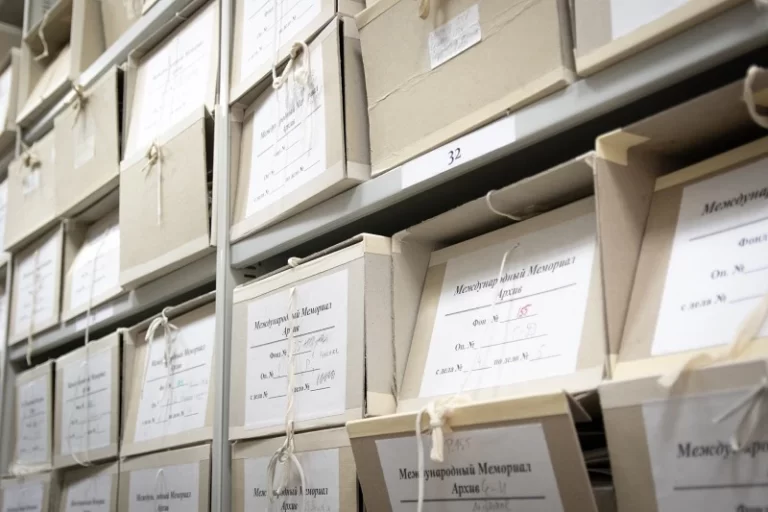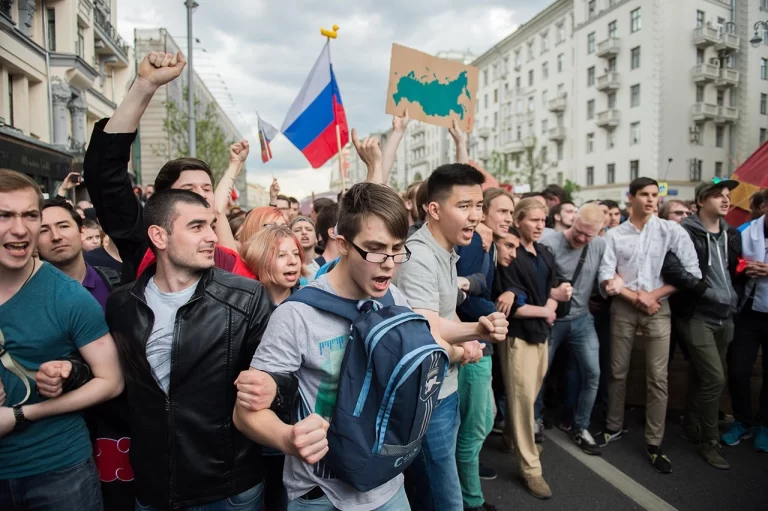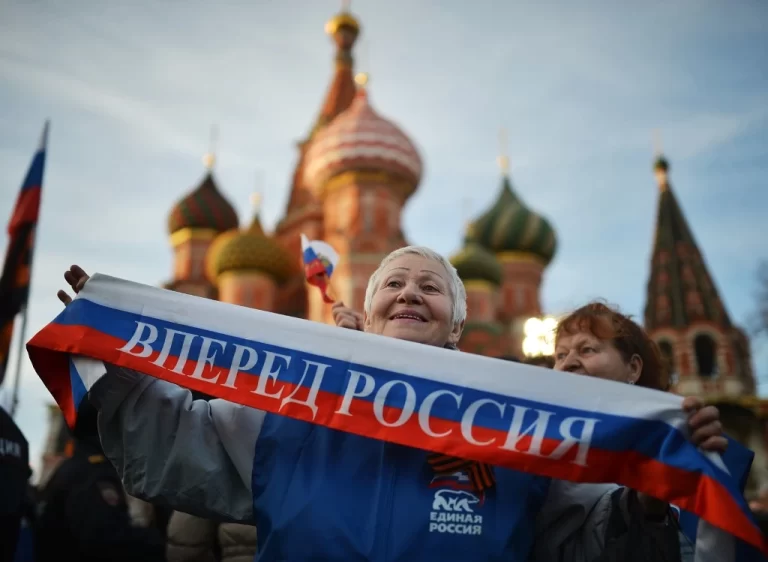How the US is Portrayed in Russia's New High School History Textbook
Spoiler: The U.S. is blamed for the USSR's economic woes, dissolution, the Cold War, the arms race, the Berlin crises, the construction of the Berlin Wall, the Korean War, and more. Soviet leaders are painted gentle and kind, constantly deceived by the treacherous Americans. Mikhail Gorbachev labeled an inexperienced politician, is accused of causing the "primary geopolitical catastrophe of the 20th century" - the collapse of the USSR. Gorbachev and Yeltsin are portrayed as not understanding Russia's national interests, whereas Putin is now rectifying their mistakes
Starting September 1, 2023, the new Russian History textbook for high school seniors will be unified and mandatory. Authored by Vladimir Medinsky, an assistant to the President of Russia, and Anatoly Torkunov, the rector of MGIMO, the book has been crafted to bolster anti-Western and anti-liberal sentiments among the youth, idealizing the USSR’s history and explaining the war in Ukraine from the perspective of Russian state propaganda.
The textbook for 11th graders covers the history of the USSR and international relations from 1945 to the present. In a previous article, we have already covered how the textbook presents the reasons and objectives of Russia’s invasion of Ukraine.
Confrontation Ideology with the ‘West’
The idea of a confrontation between Russia and the U.S. has become one of the main themes in the new textbook. The authors point out that post-World War II, the U.S. emerged as a “potential military adversary” who initially planned to strike the USSR territory with 20 and 50 nuclear attacks. Yet, the Soviet leadership aimed to prevent the “tragedy of 1941” from repeating, thereby amplifying military production and accelerating the development of the Soviet atomic bomb.
“The U.S. hoped to dominate global affairs with their nuclear monopoly. The testing of the Soviet atomic bomb shocked them,” the textbook reads.
The book attributes the low living standards of the USSR’s population in the 1950s and 1960s to post-war devastation and the “Cold War initiated by the Western bloc led by the U.S.,” which drained the Soviet economy, leaving insufficient resources to feed, clothe, and provide for Soviet citizens adequately.
Meanwhile, conversations about a decent life abroad unsettled citizens, attributed to the Soviet intelligentsia connected with “intellectual circles in the West after 1945.”
However, students are urged to question the value of a dignified human life through a particular assignment in the textbook. They are tasked with reading and analyzing an excerpt from the memoirs of Dmitry Shepilov, the secretary of the Central Committee of the CPSU.
Here’s a snippet from the “source”:
«Among some intellectuals, not just them, there’s a prevailing sentiment: let politics be damned. We just want to live well. Earn well. Breathe freely. Enjoy our leisure… These attitudes become even more dangerous when combined with a humble admiration for the West: “Ah, the West!”, “Ah, democracy!”, “Such literature!”, “Look at those street trash cans!”. How shameful, what a degradation of national dignity! There’s one thing these gentlemen, who sigh over the “Western way of life,” can’t explain: why did we defeat Hitler and not those with fancy trash cans on their streets?”
When describing the USA, the textbook authors employ language reminiscent of classic Soviet propaganda. According to the textbook, in the USA, there was a “paranoid persistence” of fears that “communists wanted to seize power,” resulting in the removal of “pro-Soviet literature from American libraries.”
«The country was gripped by an “anti-Soviet psychosis.” The “witch hunt” ensued, with those suspected of left-wing views being blacklisted and fired, affecting everyone from prominent American scholars to Hollywood stars. Conversely, in the Kremlin, there was a campaign to combat the “Western influence” on domestic culture, the textbook authors tell the students.
Cold War – A Result of US Aggressive Policy
The textbook places the full responsibility for instigating the Cold War on the USA. The arguments presented include:
«1. The USA emerged from the war, having significantly strengthened economically. Armed with the atomic bomb, they sought to impose their will on the heavily impacted USSR. Nuclear blackmail inevitably led to conflict;
2. The USSR supported national liberation movements in Asia and Africa, while the USA and its allies wanted to maintain some form of global colonial system;
3. The USSR intended to create a belt of friendly states to its west. The USA, on the other hand, aimed to keep Europe under its complete economic and political control;
4. By late 1945, plans were already underway in the USA to launch nuclear strikes against the USSR—initially with 20 atomic bombs, then 50, 100, and so on. The USA invested vast resources into advancing nuclear weaponry and developing long-range aviation.»
“Washington took steps to unify Western countries against the USSR and to support anti-Soviet opposition in Eastern European nations. All this hastened the division of Europe into two opposing camps,” the textbook authors conclude.
Regarding the Korean War
The textbook’s account of the Korean War starts by alleging that the USA deceived the USSR, promising to hand over Hokkaido for Soviet occupation. Still, after Japan’s surrender, they occupied the entire country.
«In the Truman administration, the White House pivoted towards supporting Japan’s territorial claims against the USSR, fueling anti-Soviet sentiments within the Japanese elite. Once a Japanese colony, Korea was split into two occupational zones along the 38th parallel by the USSR and the US,” lament the textbook authors.
Subsequently, according to the textbook, the US deceived the USSR again in 1951 when the peace treaty with Japan didn’t specify which country Japan was relinquishing the Kuril Islands.
“The Korean War erupted in 1950, marking not only a major military confrontation in the global standoff between the US and USSR but also one of the bloodiest local conflicts of the 20th century,” the textbook notes.
Under these circumstances, the USSR and the People’s Republic of China “were compelled to intervene to save North Korea urgently.”
“Soviet pilots, including the celebrated ace Kozhedub, fiercely countered the US Air Force. US bombers, which brutally targeted Korean cities, faced significant losses. Soviet pilots downed several times more American planes than they lost: with 1,106 aerial victories for Soviet pilots against the Americans’ 335,” states the textbook.
The USA attacks, and the USSR only defends and protects.
The textbook underscores the US’s aggressive foreign policy. The US is blamed for the First Berlin Crisis:
“The US was uninterested in employing the German population. Instead, they cynically employed so-called ‘managed democracy,’ selectively distributing humanitarian aid to prop up specific political and social groups of their choice.”
The “anti-Soviet propaganda in West Germany” led to the first Berlin Crisis from 1948 to 1949 and the division of Germany. The US is also blamed for the Second Berlin Crisis and the construction of the Berlin Wall in 1961.
The authors stress that the US was the first to create NATO in 1949, with the USSR only responding six years later by establishing the Warsaw Pact.
The textbook lists alleged instances where the US “orchestrated coups,” conducted “subversive activities” against Cuba, and set up military bases to encircle the USSR.
In contrast, Soviet leadership is painted as “peace doves.” For instance, at the 20th Congress of the Communist Party, the USSR’s leadership’s official stance was to no longer view the Cold War confrontation with the West as a threat to their country’s existence. Nikita Khrushchev called for a collective security system to prevent war.
However, in 1957, the USSR successfully tested an intercontinental ballistic missile, ending the era of the US’s military invincibility. Still, the textbook emphasizes that from the USSR’s side, this wasn’t an act of aggression or war preparation but rather an aim to achieve a “military-strategic parity with the US.” Khrushchev even became the first Soviet leader to visit the US. However, as per the narrative, the US subsequently ruined things again.
Based on the textbook, Congress passed the “Captive Nations Act.”
“It directly linked the strategic interests of the U.S. with the necessity of disintegrating the USSR into dozens of independent states under the guise of ‘liberating them from communism.’ Russians were portrayed as the ‘oppressors’ of all other Soviet nations,” the textbook authors note.
The authors argue that Khrushchev felt compelled to deploy nuclear missiles to Cuba in 1962, pushing the world to the brink of nuclear war. However, the magnanimous Khrushchev saved everyone. In exchange for missile removal from Cuba, he secured a U.S. pledge not to invade Cuba, ensuring its independence.
According to the textbook, “The USSR was a large home for fraternal nations building communism, while the U.S. orchestrated all anti-communist national organizations to foster separatist sentiments.”
Gorbachev’s Missteps
The textbook starts with a quote from President Putin suggesting that the dissolution of the USSR was the “major geopolitical catastrophe of the 20th century.” Consequently, with his reforms, Mikhail Gorbachev is portrayed as an inept villain acting in the interests of a hostile West.
Regarding Gorbachev, the textbook states he was ill-informed about industrial, military, and foreign policy matters. He had never managed a construction site, nor had he been the director of a major factory, and lacked ministerial experience. The textbook all but suggests that Gorbachev’s cabinet deceived the Soviet people who had trust in Soviet values:
“By the time Mikhail Gorbachev came to power, most of the population still had faith in Soviet values. The dissident movement was undergoing a profound ideological crisis. Everyone understood that societal reforms within the Soviet system could only be initiated from the top. It seemed Gorbachev’s initiation of decisive reforms would better the nation’s situation and solidify his position. Yet, he had no clear plan of action.”
The policy of “glasnost” is depicted in the textbook as an avalanche of misinformation in the West’s favor, while the prohibition of censorship is portrayed as the state’s abandonment of its informational sovereignty:
“Openly hostile forces, including those directed from abroad, became highly active. With all censorship restrictions lifted and the state essentially stepping back from media control, the citizens of the USSR were bombarded with destructive and hostile information, presented as ‘freedom of speech.’ A few voices claiming the state had a right to protect its informational sovereignty went unheard. There was no adequate response from the country’s leaders. Soviet society, which was instilled with trust in the printed word for decades, had no immunity to this manipulative influence.”
The textbook authors conclude for readers that out of the Cold War emerged only one superpower – the USA, while the USSR was dismantled. The subsequent policy of continuous concessions by the Russian leadership weakened the nation, leading to national humiliation.
Putin – Savior and Gatherer of Russian Lands
The textbook lists the “hard challenges” in the foreign policy of the early Putin era, such as “NATO’s eastward expansion,” “rising neo-Nazism and Russophobia in neighboring countries,” “establishment of anti-Russian regimes,” and Washington’s ambition “to control Russian resources and permanently sideline Russia from the roster of world’s key powers.”
Facing such hostilities, President Putin had to roll up his sleeves and clean up the mess left by Gorbachev and Yeltsin. Due to Russia’s return to an independent foreign policy, the authors argue that relations with the West began to sour.
“The political trajectory from the end of 1999 to 2007 aimed at overcoming the adverse effects of the 1990s. A power vertical was established, and a unified legal framework of the country was restored. The government actively combated the terrorist threat. The crisis in the Chechen Republic was resolved. Measures taken under the president’s leadership facilitated Russia’s revival and steady socio-economic progress. These steps garnered the support of the vast majority of the population,” the textbook reads.
EU countries, the textbook notes, “succumbing to US political dictation,” backed out of several joint projects with Russia. In this scenario, Putin was forced to seek “more reliable partners.”
In 2014, the USA and the European Union refused to recognize Crimea’s accession to Russia. The authors summarize that the West condemned it as aggression against Ukraine because NATO had groomed Ukraine to serve as the primary battering ram against Russia.
The overarching idea conveyed to the younger generation is that had Putin not initiated the “special military operation” in Ukraine, a global catastrophe would have ensued, which had to be averted.
The textbook accuses the USA of orchestrating the “Nord Stream” gas pipeline explosion in the Baltic Sea in September 2022, purportedly to increase Europe’s energy dependence on the US.
“For the profits of their corporations, the USA consistently resorted to military-terrorist methods – as seen in Iraq, Syria, Libya, and many other global hotspots,” the textbook reads.
Textbook authors caution readers against believing everything they read online about the war in Ukraine, noting that the “global industry of staged clips, disinformation, fake photos, and videos operates like a relentless assembly line. Western and mainstream social media, dominant in the global information arena, eagerly circulate any sensational rumor.”
The authors also introduced the new “History of Russia” textbook, now mandated for all Russian schools. They argue that the US is to blame for Russian teachers no longer having the freedom to choose their books:
“The US and the European Union invested vast sums in crafting specialized historical, educational programs, or so-called ‘textbooks.’ No effort or expense was spared to ‘reset our brains’ (their professional term) and convince us of Russia’s eternal aggression and colonial essence,” Medinsky and Torkunov express indignantly.
At the very outset of the textbook, readers are presented with a central ideological doctrine to be internalized: the USSR was home to many nations that prospered within its borders, and its dissolution resulted from US machinations and the principal geopolitical disaster of the 20th century. Reflecting this theme, the textbook, right after its introductory article, features two quotes: one from the first astronaut, Yuri Gagarin, declaring that his space journey was the achievement of the entire Soviet people, and the other from President Putin about the “geopolitical catastrophe.”
Indeed, the entire textbook is devoted to elaborating on this propagandist notion.






